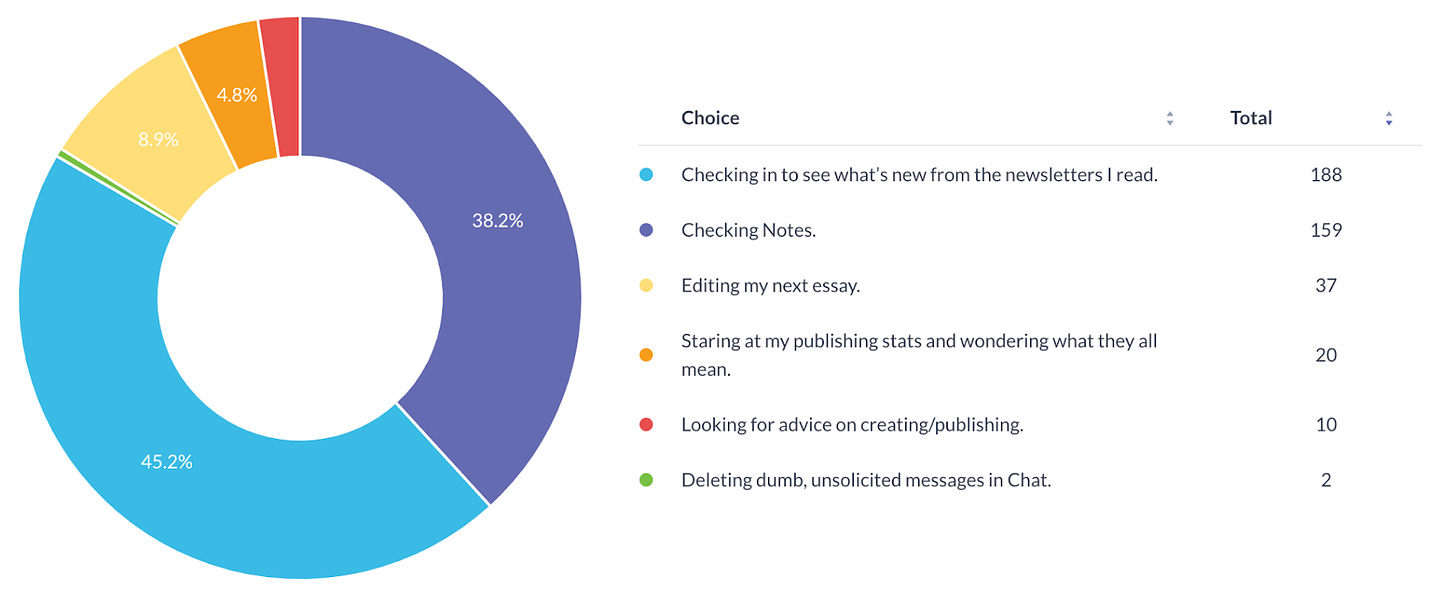What Readers Really Want: Publishing Cadence, Connection and Valued Essays
Survey data reveals key factors that inspire readers to subscribe, engage and stick with your newsletter
Today, we dive into another set of results from my recent Substack Reader Survey, focusing on arguably the most foundational aspects to writing a newsletter — readers’ connection with you and your work. We'll explore key questions on the minds of many Substack creators, including a common query: How often should I be publishing on Substack?
We’ll look at readers’ responses to:
What inspires you to sign up for a paid subscription?
What makes you feel most valued by a creator on Substack?
When you become a paid reader of someone’s publication, what do you expect to receive?
When you’re busy in the middle of the day but hop onto Substack anyways, what are you most likely doing?
What gets your attention first on Substack?
When a creator needs to take a vacation, what do you prefer?
All of these questions were designed to help creators in specific situations navigate what is best for them, their publication and their creative vision. We’ll dive into all of these, plus I’ll be offering a quick analysis and a few calls to action for creators who are eager to put these insights into practice now.





